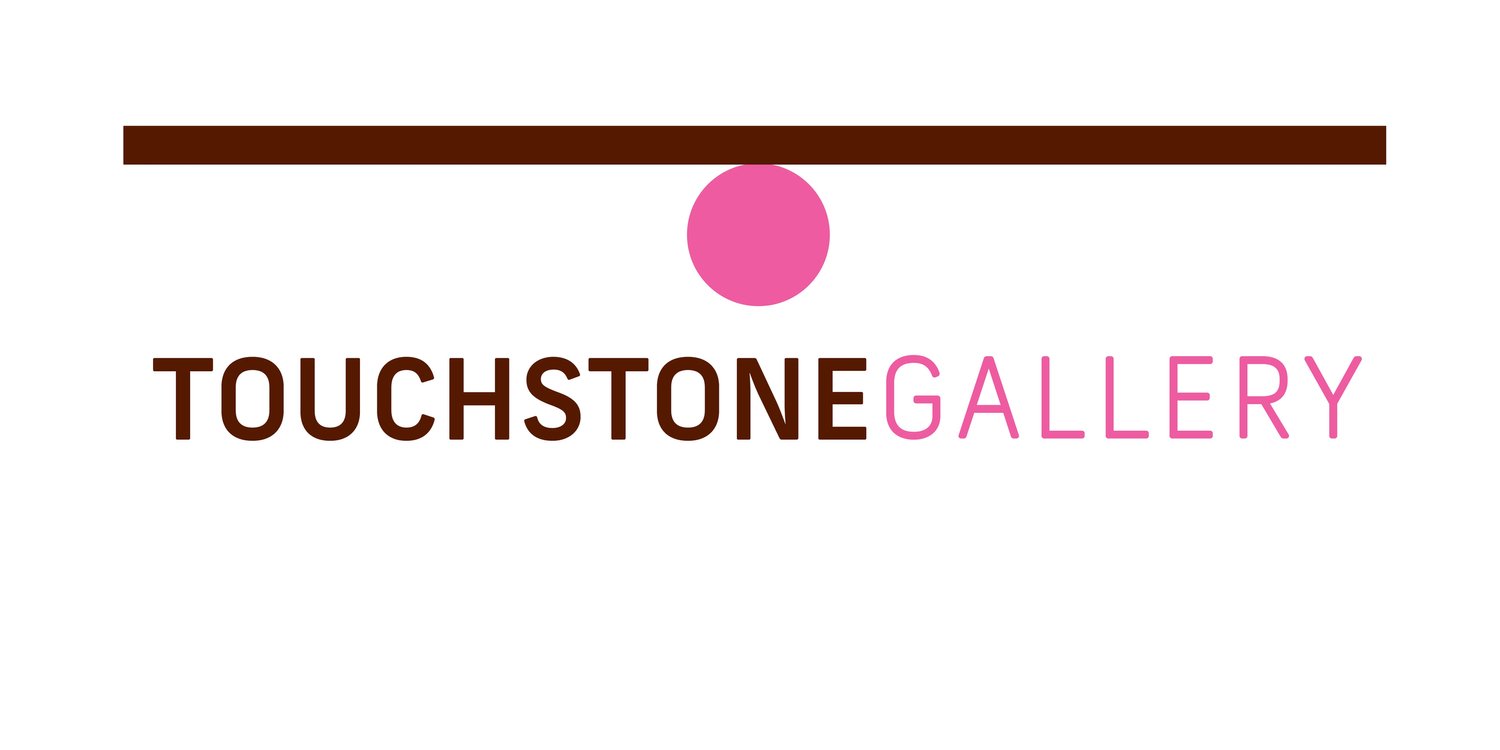Read an interview with Touchstone member and Persian Perspectives: Celebrating Iranian Women Artists of DC artist Setareh Pourrajabi and Touchstone Intern Emma Cunningham-Bradshaw about Pourrajabi’s pieces in the exhibition and her artistic influences.
See Persian Perspectives through July 2, 2023.
ECB: You currently have two pieces on display at Touchstone, could you tell me about ‘Rebecca’ and ‘The Notice’, the characters or people in these pieces?
SP: These two artworks belong to the Forbidden Zone collection and explore women’s relationships with themselves and effects from their surroundings. I think the woman embodied in these artworks is the real woman. The figures are uncovered physically, yet there is a lot going on in their minds. In these pieces, the women are not in comfortable positions, they are broken figures. I see women like them, beautiful and still struggling. Woman can state her independence and professional success but at the end of the day she is a mother, she is a wife, she has to take care of so many things. Here are the oppositions: she wants to relax but she doesn’t. The pieces also move in a circular fashion: there is always movement, never rest. But the women are happy too; the bright colors say as much. This is how we are as women, we are happy yet we bear the weight of so many responsibilities.
ECB: You have varying degrees of realism in your art, what inspires you to produce art in these different styles and techniques?
SP: I started producing art when I was 10, drawing fruits, vegetables, flowers, then faces. I got bored after a couple of years and so I went to watercolor which was so exciting. Again, that was boring after a couple of years. I was successful as a watercolor artist, yet I wanted to create something for myself and watercolor did not provide me with the creative space I craved. I moved to oil color, and then I fell in love with acrylic. At 20, I learned from a very good teacher in Iran, and his class really propelled a revolution in my mind. I was exposed to so many things that were all new to me! Now, expressionism with acrylic paint is what satisfies me most, though this might change in the future. I also love photography since I have a passion to find people’s beauty, at different angles and positions.
ECB: You name Hegel as one of your influences, can you tell me more about his influence?
SP: Hegel’s theory of dialectic means there is a continuous back and forth motion. There is a space in between these oppositions and in my art I want to capture what occurs in that in-between area. The Notice, for example, asks you to question where the movement is between the two figures, in which direction it’s going.
ECB: Do you have other influences who are not primarily visual artists, whether these be philosophers, poets or otherwise?
SP: Definitely, many Persian poets have influenced me. I read Forough Farokhzad’s poetry everyday as a teenager because she wasn’t traditional, she was so brave, she brought a new vision for women’s life in Iran. Also important to me are poets Saeed Soheyli and Khayam Saady, though there is a long list of others.
ECB: The title of the show at Touchstone is ‘Persian Perspectives: Celebrating Iranian Women Artists of DC,’ what does Persian Perspectives’ mean to you? And do you feel you have a dual identity of being Iranian and a DC-dweller?
SP: As an artist, I am trying to show that we as Persians can be free too, we can talk about our ideas and goals. D.C. is the most important political city in the world, so if you are a Persian artist and show your art here, attention goes to the situation in Iran. Being an artist in Iran is a very political action, many artists in the US cannot go back to Iran as they could be jailed. Still, I see a very beautiful prospect for Iranians. Throughout history we have always managed to keep our independent identity, culture and language so I think there is a bright future for us of union, peace and happiness.

